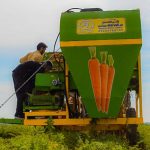Corn silage and its value
based on a type of division and on the origin of feed, silage can be placed in the group of fodder materials. Controlled fermentation of moisture-rich materials such as corn fodder, alfalfa, barley, sorghum and clover leads to the production and processing of silage. It is considered a unique food for all kinds of animals. The storage time of these feeds is longer by using fermentation, and it also contains useful energy-generating substances to strengthen livestock. The abundant production of lactic acid in a short period of time and the rapid lowering of PH in silage fodder are the main reasons for the preparation of high-quality and suitable silages. The results obtained from recent research show that lactobacilli are the dominant microorganisms in growing fodder, which plays an important and essential role in silage fermentation. In general, fermentation in silage makes silage fodder to be used for long periods of time, and it is expected that the nutritional value of the forage will not change much. Normally in Iran, silages are prepared with chopped corn plant, which includes stalks, leaves and maize, but in countries that produce a lot of alfalfa and have the problems to drying it, alfalfa silage, clover, sorghum and Barley is also widely produced.

Importance of packaged corn silage
In recent years, ensiling different types of forage has been one of the most common methods in animal breeding centers to provide animal feed. During this period, a lot of progress has been made in the country’s industrial animal husbandry as well as forage storage methods. This improvement compared to the use or non-use of silos, or the fact that most villages and remote areas do not know much about it, has brought about a significant transformation. The need of cow and sheep in order to produce more, faster and more easily should be met in such a way, the use of packaged silages brings this possibility to them. Forage such as alfalfa and corn have high humidity, this almost high humidity makes these forage vulnerable to anaerobic and aerobic microbes.

It is obvious that if we leave the process of chemical transformations created in the silage to nature, we should expect that mold and corruption will occur in the silage and be accompanied by the loss of dry matter. In general, the vital role of packaging silage in silage production is to prevent these damages and troubles and more importantly to control the fermentation process. In short, packaging silage is a way to supply, preserve dry matter, prevent spoilage, promote Giving the fermentation process, the better digestion, and ultimately more milk and meat production, as well as improving fertility.


